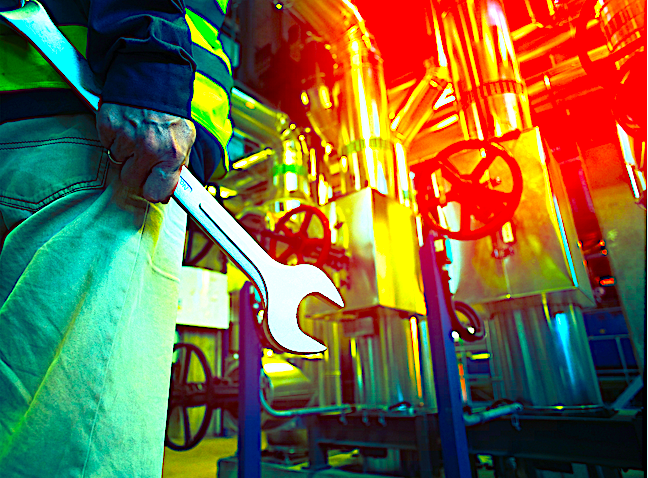Taking care of your machinery, equipment systems, and facilities is more than good maintenance. It’s basically good medicine for better health and freedom from injury or illness. The physical assets in our businesses must be healthy to perform as intended. That’s what “reliability” is all about.
Reliability improvement is an asset-health and -wellness protocol for equipment systems, machinery, and facilities. Consider this: Our personal health and wellness doesn’t just happen. As humans age, we don’t intend to run to a premature failure. But, failures happen—they’re inevitable. In reliability terms, a personal “functional failure” means we can’t do what we used to be able to do, what we were designed to do. At some point. caregivers pitch in. An extreme failure, i.e., a catastrophic failure, means end of life.
A plant’s physical assets also age. Much like humans, they can slow down, vibrate, leak, and groan as they grow older. Our job as “caregivers” is to maintain the health and wellness of these assets, so they continue to perform as planned throughout their intended life cycle.
EXPANDING THE TEAM
Maintaining physical assets, however, is NOT the sole responsibility of a site’s maintenance department, mechanics, and/or technicians. Sure, they play a pivotal role, but so do operators, engineers, buyers, and production planners/schedulers. All these departments and individuals should be considered part of a “reliability team of caregivers” that’s ready for action to focus on common goals: keeping an operation’s physical assets healthy (reliable). This multi-skilled team of caregivers should embrace the following three concepts to guide their actions for healthy assets.
1. Efficiency: Doing Things Right
Doing things right quite often means following defined procedures (standard work), performing every step right the first time, every time. Keep procedures current and accurate. Insist that they be followed.
2. Effectiveness: Doing the Right Things
Physical assets don’t necessarily require the same level of care. Some call for more (or less) frequent maintenance, depending on their duty cycle or operating environment. Doing the right things is doing what specific equipment needs, and asset performance data proves that.
3. Prevention: Optimizing Resources
Reducing maintenance intervals, tasks and time to perform saves time, money, resources and reduces planned (and unplanned) downtime. The concepts of maintenance prevention make sense for constraint, equipment. Use the equipment performance history, work order history (repairs, preventive maintenance, etc.) and operation history (availability, performance rate, quality/yield rate, energy usage, etc.) to determine if maintenance prevention is worthwhile.
Changing from calendar-based preventive maintenance to condition-based maintenance is an example of maintenance prevention. Adding equipment visuals quite often makes inspection easier, eliminates opening guards, and using tools.
Prolonging the intervals between preventive maintenance (PM) is another example of maintenance prevention. Why perform a PM every 30 days if nothing has deteriorated or needs servicing every 30 days? While 30-day intervals may be a scheduling convenience, they may not benefit the machine or the operating schedule. Try 45-day intervals and look for deterioration. If nothing is noticed and the machine performs as intended, extend the interval to 60 days. If signs of deterioration or replenishing lubricants and the like are observed move, the interval back to 45 days.
BOTTOM LINE
When all is said and done, it’s good to remember that healthy physical assets are reliable assets. And it’s important to keep them that way.TRR
ABOUT THE AUTHOR
Bob Williamson is a long-time contributor to the people-side of the world-class-maintenance and manufacturing body of knowledge across dozens of industry types. His background in maintenance, machine and tool design, and teaching has positioned his work with over 500 companies and plants, facilities, and equipment-oriented organizations. Contact him directly at 512-800-6031 or bwilliamson@theramreview.com.
Tags: reliability, availability, maintenance, RAM, workforce issues



